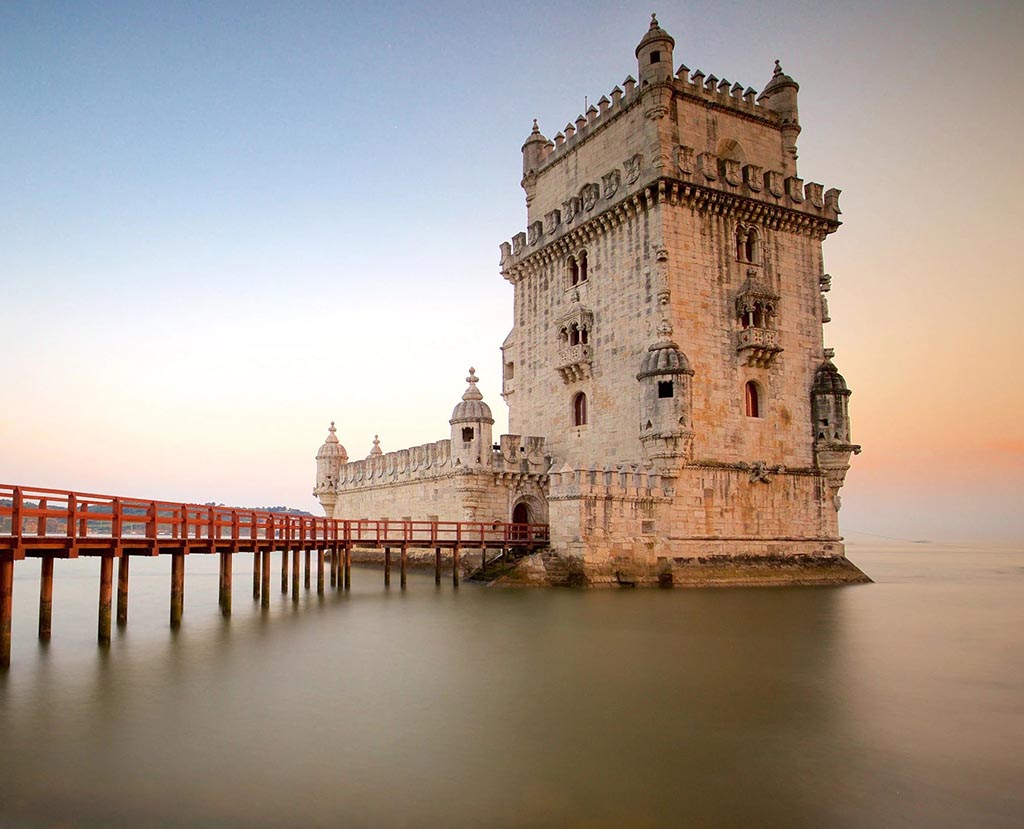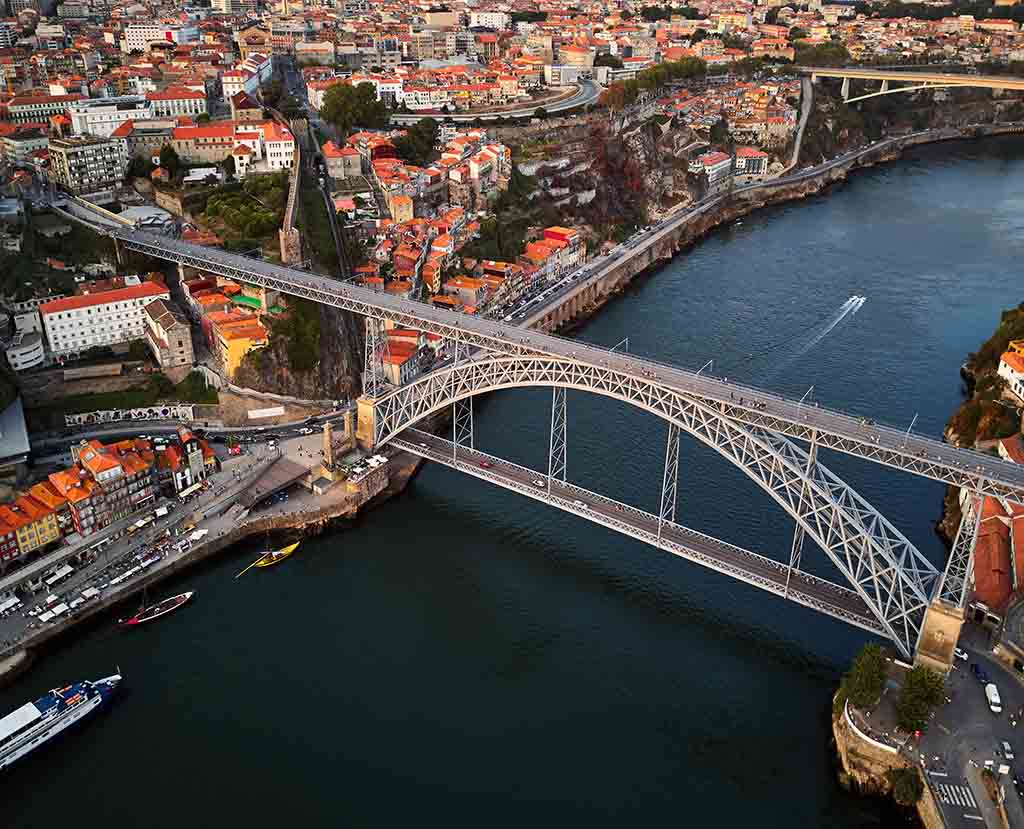Lisbon, the capital of Portugal, is an ancient city standing on seven hills. Under the blowing of the Atlantic Ocean breeze, it unfolds a vivid picture of cobblestone streets, dinging yellow trams, delicate blue and white tile patterns and the coastline sprinkled with golden sunset.
This was once the starting point of the glorious maritime empire, carrying the historical memory of exploration, glory and faith, and gradually transformed into a cultural city full of creativity and vitality in the tide of the times.
From the ruins of the former royal palace to the Revolution Square, which symbolizes the modern spirit of freedom, this cultural axis that runs through the city is not only a witness to the memory of the empire, but also a journey of interweaving and resonance of different eras. Every step makes people feel the unique soul temperature of Portugal.
1. Belém Tower (Torre de Belém): A symbol of the empire’s dream of sailing
Location: Avenida Brasília, Belém District
Opening hours: 10:00 – 18:30 (May to September), 10:00 – 17:30 (October to April of the following year), closed on Mondays
Suggested time to visit: 1.5 hours
Transportation route: Take tram 15E to “Belém” station, and walk about 8 minutes to reach
Booking platform: GetYourGuide, Tiqets, Klook
Cost: Adult ticket is about 6 euros, free with Lisboa Card
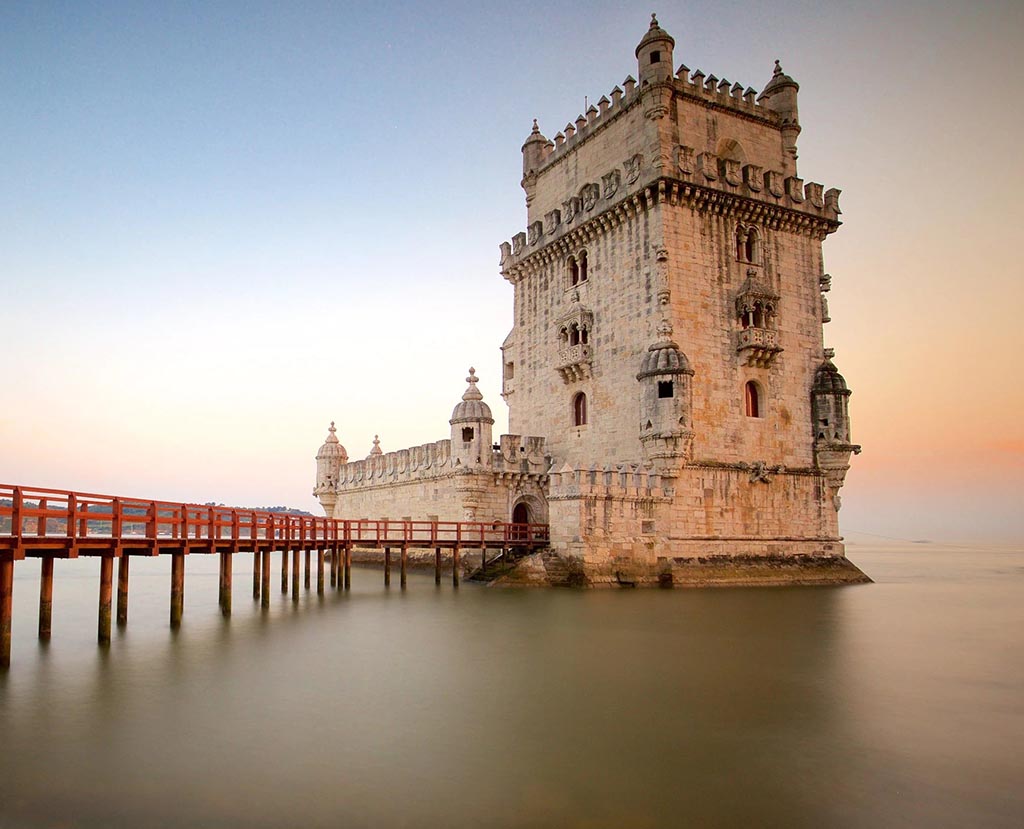
The Belém Tower is a must-visit for every history lover. This defense tower built in the 16th century was once an important gateway to Portugal’s Age of Navigation, guarding fleets heading to the unknown world. Today, it is not only a UNESCO World Cultural Heritage, but also a paradise for photography enthusiasts. Its elegant Manueline-style carvings and stone window details all tell the story of Portugal’s most glorious maritime empire years.
After climbing the tower, visitors can overlook the Rio Tejo and imagine how those explorers who set sail set foot on every corner of the world map. Looking into the distance from the top of the tower, it seems that you can still see the traces of the sails going away.
2. Jerónimos Monastery (Mosteiro dos Jerónimos): The intersection of faith and exploration
Location: Praça do Império, Belém District
Opening hours: 10:00 – 18:30 (May to September), 10:00 – 17:30 (October to April of the following year), closed on Mondays
Suggested playing time: 2 hours
Transportation route: 15E tram to “Mosteiro Jerónimos” stop
Booking platform: GetYourGuide, Tiqets, Civitatis
Expense: Adult ticket is about 10 euros, free with Lisboa Card
Jerónimos Monastery, just a few steps away from Belém Tower, is another symbol of Portugal’s Golden Age. Built in 1496, this magnificent building, a fusion of Gothic and Manueline styles, was not only a place of worship for the royal family, but also a place for Vasco da Gama to pray before his departure.
The stone columns inside the monastery extend to the ceiling like palm trees, with exquisite details and solemnity. Visitors can walk into the tombs of Vasco da Gama and the literary giant Camões, and feel the blend of exploration spirit and poetic imagination. Its cloister courtyard is a quiet place, with sunlight falling on the white stone slabs, and time seems to slow down here.
3. Praça do Comércio: The economic heart in front of the former Royal Palace
Location: Baixa district, north bank of the Tagus River
Opening hours: Open all day, the surrounding museums are open from 10:00 to 18:00
Suggested time: 1 hour, recommended to visit in the evening
Transportation route: Metro Blue Line to “Terreiro do Paço” station; or take tram 28E to “Rua da Conceição” and walk for 5 minutes
Booking platform: Free Tour platform, GetYourGuide (Square Historical Walking Guide)
Expense: The square is free to open, and the museum tickets vary depending on the content, ranging from 5 to 10 euros
Praça do Comércio is one of the most visually stunning squares in Lisbon. It was once the site of the Portuguese Royal Palace. It was rebuilt after the earthquake in 1755 and became a symbol of the country’s confidence and economic recovery. Today, the square is flanked by arcade buildings, and the bronze statue of Joseph I on horseback stands in the center, facing the wide river bank, in sharp contrast to modern cruise ships and street art performances.
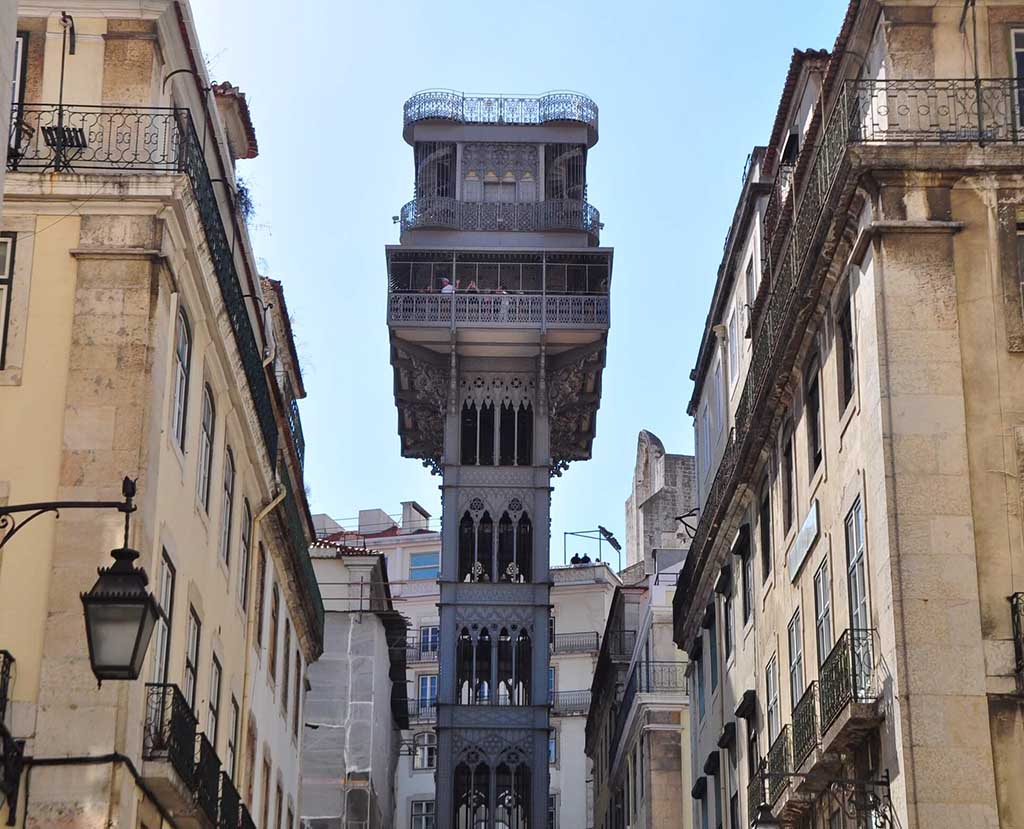
It is recommended to go there in the evening, when the sun shines obliquely on the yellow buildings, and the golden glow and the Tagus River complement each other, which is very worth watching. In addition, you can also walk through Rua Augusta from here, exploring handicraft shops, taverns and modern design stores along the way. It is the intersection of shopping and cultural experience.
4. Santa Justa Elevator (Elevador de Santa Justa): A vertical connection of the old city
Location: Rua do Ouro, Baixa District
Opening hours: 7:30 – 23:00 (summer), 7:30 – 21:00 (winter)
Suggested play time: 30 minutes
Transportation route: Metro Blue Line to “Baixa-Chiado”, or take tram 28E and walk after getting off
Booking platform: Klook, Tiqets, Lisboa Card (including free ride)
Cost: about 5.30 euros (elevator + observation deck), free ride with Lisboa Card
The Santa Justa Elevator connects the lower city of Baixa and the upper city of Chiado, and is a city symbol that combines technology and aesthetics. Its Gothic appearance and metal frame were designed by Eiffel’s disciples, full of 19th-century industrial aesthetics. Riding this elevator not only saves physical energy, but also a journey through the city’s levels and time.
After reaching the top viewing platform, visitors can overlook the panoramic view of the city center, from Augusta Street to St. George Castle. It is one of the best places to take panoramic photos of the city. The elevator itself is a work of art, and it also reminds people how urban construction and culture go hand in hand.
5. Carmo Convent: Tranquility and shock in ruins
Location: Largo do Carmo, Chiado District
Opening hours: 10:00 – 18:00
Suggested play time: 1 hour
Transportation route: Take the Santa Justa elevator up and walk for 2 minutes
Booking platform: GetYourGuide, Tiqets
Expense: Adult tickets are about 5 euros, and Lisboa Card holders enjoy partial discounts
Carmo Convent is a mark left by the earthquake in 1755. The earthquake destroyed the roof of the church, and the monastery chose to retain the ruins in the reconstruction, becoming the most shocking visual site today. The church vault is now exposed under the blue sky, and the sun shines through the arches and falls between the stone walls, making people seem to hear the bells echoing in the past.
There is an archaeological museum in the courtyard, which displays precious collections such as ancient Roman artifacts, medieval sculptures, and mummies. History fans and photography enthusiasts will be surprised here. This is also one of the places with fewer tourists but a strong sense of culture. It is recommended to visit it with the Santa Justa elevator.
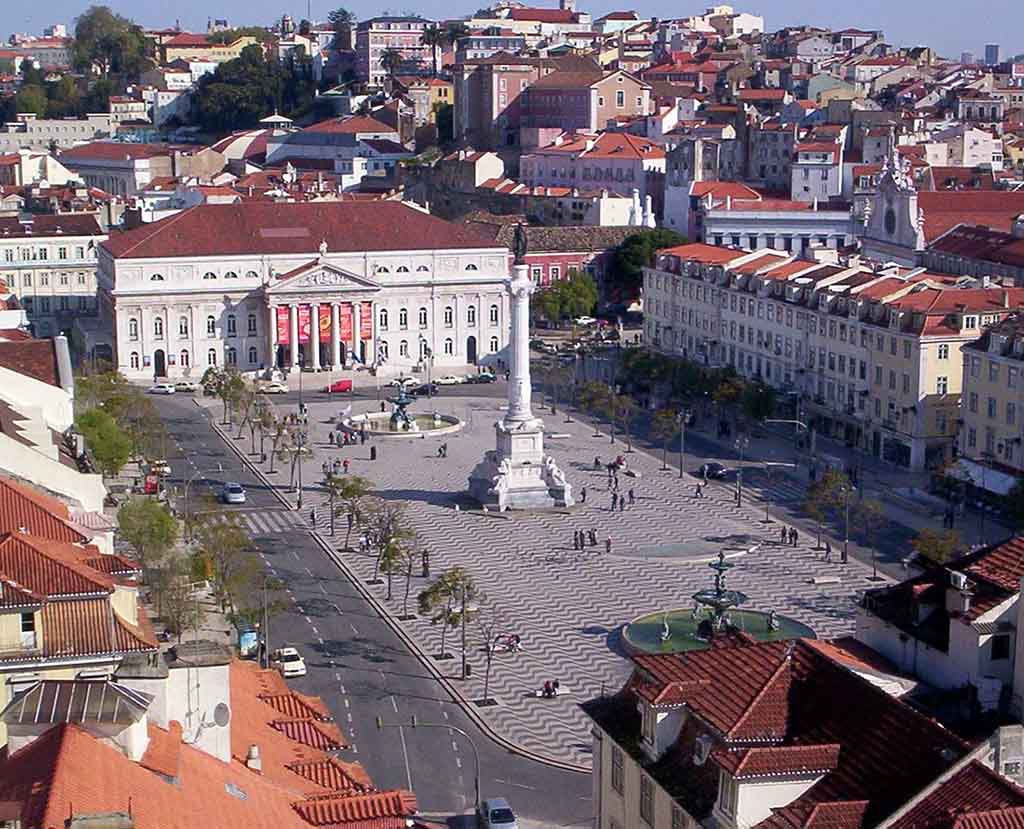
6. Revolution Square (Praça do Rossio): Echoes of freedom and urban rhythm
Location: Center of Rossio District
Opening hours: Open all day
Suggested play time: 1 hour, which can be combined with the surrounding squares and cafes
Transportation route: Metro Green Line “Rossio” station; or take tram 28E to “Praça da Figueira”
Booking platform: Free travel route recommendation platform Civitatis, Free Tour provides historical guided tours
Expense: The square is free, and the guided tour fee ranges from 5 to 15 euros
Revolution Square, also known as “Dom Pedro IV Square”, is the city core in the minds of Lisbon people. Historically, this was the public trial square and the place where people celebrated freedom after the fall of the dictatorship. Today, a statue of Pedro IV stands in the center of the square, flanked by symmetrical fountains and Portuguese-style wavy tiles, which are extremely geometric.
There are many historic cafes and theaters around the square, the most famous of which is the “Nicola Cafe”, where many politicians and poets have expressed their views. During the day, it is a bustling transportation hub, and at night it is a social scene under street music and lights, the best place to feel the real rhythm of life in Lisbon.
From the commercial square where the royal palace once stood to the Liberty Square commemorating the revolution, every step in Lisbon is like walking in a thick history book. Unlike cities that only tell stories of glory or tragedy, the charm of Lisbon lies in its soft, poetic and inclusive way of accepting the vicissitudes of history and the hustle and bustle of the present.
Visiting these landmarks is not only a visual shock, but also a journey of the soul. Through booking platforms such as GetYourGuide, Tiqets, and Klook, travelers can arrange their itineraries more efficiently and flexibly, and deeply experience the multifaceted features of this city. Whether you are riding a century-old elevator, gazing at the Tagus River, or sipping a strong espresso in a corner of the square, Lisbon can accompany you to wander between imperial memories and contemporary atmosphere with its unique rhythm.
